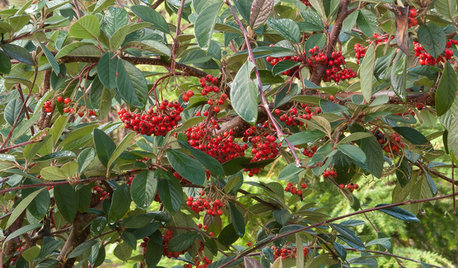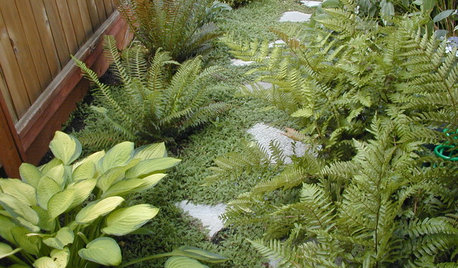Clearing groundcover
xanadu
20 years ago
Related Stories

LANDSCAPE DESIGNThe Case for Functional Garden Design
Clear away the decoration to give every area of your garden a clear function
Full Story
GARDENING GUIDESGreat Design Plant: Cotoneaster Lacteus
Parney cotoneaster is a low-maintenance, four-season shrub that offers great foliage, spring flowers and jewel-like berries
Full Story
GARDENING GUIDESNew Ways to Think About All That Mulch in the Garden
Before you go making a mountain out of a mulch hill, learn the facts about what your plants and soil really want
Full Story
GARDENING GUIDES15 Ideas to Try in Your Garden This Year
These gardening stories were tops among Houzz readers. Which ideas might you try this year?
Full Story
BEFORE AND AFTERSSee 6 Yards Transformed by Losing Their Lawns
Wondering whether a turf lawn is the best use of your outdoor space? These homeowners did, and they found creative alternatives
Full Story
LANDSCAPE DESIGNGet Along With Less Lawn — Ideas to Save Water and Effort
Ditch the mower and lower your water bill while creating a feast for the eyes with diverse plantings and gathering places
Full Story
PETSHouzz Call: Show Us Your Pet Projects!
Bubble windows, fountains, doghouses, showers — what outdoor treats have you put together for your furry friends?
Full Story
MOST POPULARMeet a Lawn Alternative That Works Wonders
Carex can replace turfgrass in any spot, is low maintenance and adjusts easily. Add its good looks and you’ve got a ground cover winner
Full Story
FALL GARDENING5 Ways to Put Fall Leaves to Work in Your Garden
Improve your soil and yard the organic way with a valuable garden booster that grows on trees
Full Story
LANDSCAPE DESIGN6 Great Ways With Garden Ground Covers
Use them as problem solvers, weed killers, color and texture providers ... ground cover plants have both practical and visual appeal
Full Story





ginny12
ginger_nh
Related Professionals
Londonderry Landscape Architects & Landscape Designers · Maple Valley Landscape Architects & Landscape Designers · New Mexico Landscape Architects & Landscape Designers · Salisbury Landscape Architects & Landscape Designers · Wixom Landscape Architects & Landscape Designers · Arlington Landscape Contractors · Englewood Landscape Contractors · Hicksville Landscape Contractors · Marlborough Landscape Contractors · Mission Landscape Contractors · Northport Landscape Contractors · Selden Landscape Contractors · Broomfield Siding & Exteriors · Dunkirk General Contractors · Greenville General ContractorsSaypoint zone 6 CT
spectre
User
xanaduOriginal Author
ginny12
xanaduOriginal Author
FranVAz7
robyn_tx
ginny12